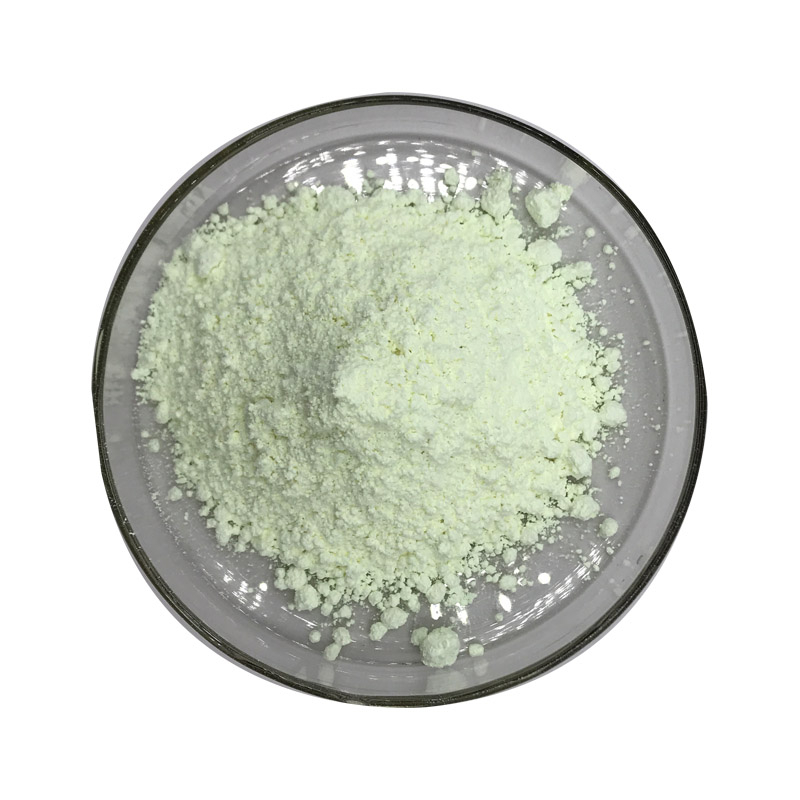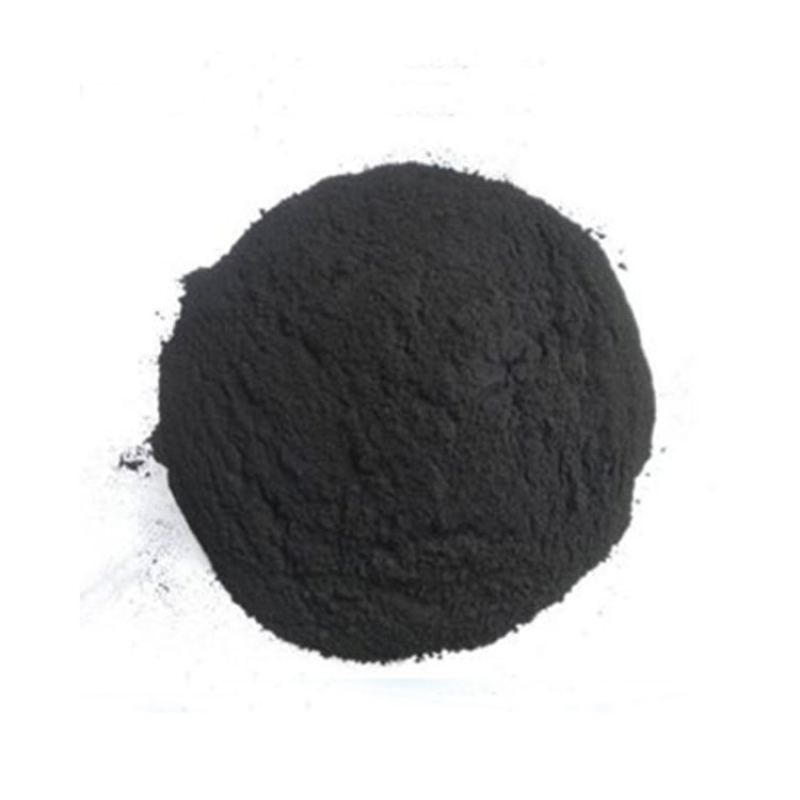Products Description of ISOQUINOLINE-3-CARBOXYLIC ACID CAS#203626-75-9 Isoquinoline-3-carboxylic acid, monohydrate is an organic compound.Isoquinoline-3-carboxylic acid Chemical PropertiesMelting point 166-168 °C(lit.)storage temp. 2-8°Cform powder to crystalcolor White to Light yellow to Light orangeSafety InformationHazard Codes XiRisk Statements 36/37/38Safety Statements 26-37/39WGK Germany 3Product Application of Isoquinoline-3-carboxylic acidIsoquinoline-3-carboxylic acid, monohydrate is often used as an intermediate.Factory
Contact Now
Products Description of [1,2,4]TRIAZOLO[1,5-A]PYRIMIDINE-2-CARBOXYLIC ACID CAS#202065-25-6[1,2,4]Triazolo[1,5-a]pyrimidine-2-carboxylic acid is a chemical.Molecular Formula is C6H4N4O2.[1,2,4]TRIAZOLO[1,5-A]PYRIMIDINE-2-CARBOXYLIC ACID Chemical Propertiesdensity 1.79±0.1 g/cm3(Predicted)form powderpka-4.67±0.41(Predicted)color CreamSafety InformationHazard Codes XiRisk Statements 43Safety Statements 36/37HazardClass IRRITANTHS Code 2933998090Product Application of [1,2,4]TRIAZOLO[1,5-A]PYRIMIDINE-2-CARBOXYLIC ACID CAS#202065-25-6[1,2,4]Triazolo
Contact Now
Products Description of Isoquinoline-3-carboxylic acid CAS#6624-49-3Isoquinoline-3-carboxylic acid is a derivative, crystalline solid.Isoquinoline-3-carboxylic acid Chemical PropertiesMelting point 166-167°CBoiling point 366.4±17.0 °C(Predicted)density 1.339±0.06 g/cm3(Predicted)storage temp. 2-8°Csolubility DMF: 20 mg/ml; DMF:PBS(pH 7.2)(1:1): 0.5 mg/ml; DMSO: 20 mg/ml; Ethanol: 5 mg/mlform A crystalline solidpka1.20±0.30(Predicted)CAS DataBase Reference6624-49-3(CAS DataBase Reference)Safety InformationHazard Codes XiRisk Statements 36/37/38-36Saf
Contact Now
Products Description of 6-CHLOROIMIDAZO[1,2-B]PYRIDAZINE-2-CARBOXYLIC ACID CAS#14714-24-06-Chloromidazo[1,2-B]pyridazine-2-carboxylic acid can be used to prepare compounds which can be used as active pharmaceutical substances, in particular Trk antagonists, i.e. they block the intracellular kinase activity of Trk, e.g. TrkA (NGF) receptors. Tropomyosin-related kinases (Trks) are a family of receptor tyrosine kinases activated by neurotrophic factors. Trks play an important role in pain perception and in tumor cell growth and survival signaling.
Contact Now
Products Description of 3-Hydroxy-1-AdaMantane Carboxylic Acid CAS#42711-75-13-Hydroxyadamantane can be used to synthesize potent pyridineamide/sulfonamide inhibitors of 11β-HSD-1, which can be used to treat ulcers or hormone therapy related to cortisol3-Hydroxy-1-AdaMantane Carboxylic Acid Chemical PropertiesMelting point 203 °CBoiling point 357.2±25.0 °C(Predicted)density 1.419±0.06 g/cm3(Predicted)storage temp. Sealed in dry,Room Temperaturesolubility DMSO (Slightly), Methanol (Slightly)form Solidpka4.60±0.40(Predicted)color Off-WhiteInChIInChI=1S/C11
Contact Now
Products Description of ISOQUINOLINE-5-CARBOXYLIC ACID CAS#27810-64-6ISOQUINOLINE-5-CARBOXYLIC ACID is a chemical.
Contact Now
Products Description of Formic acid CAS#64-18-6 Formic acid is an important chemical raw material. It was first discovered by Fisher in 1670. A.S.Marggret first produced pure formic acid in 1749.It was first discovered by distilling red ants, hence the name formic acid. Formic acid is widely found in nature, such as in the secretions of red ants, bees, caterpillars, etc., in the leaves and roots of plants, and in fruits. It is the simplest carboxylic acid. Compared with other fatty carboxylic acids, it has a special structure and is more acidic.
Contact Now
Products Description of 3-Pyridazinecarboxylic Acid CAS#2164-61-63-Carboxypyridazine is a heterocyclic derivative that can be used as a pharmaceutical intermediate in pharmaceutical experimental research and pharmaceutical synthesis.3-Pyridazinecarboxylic Acid CAS#2164-61-6 Chemical PropertiesMelting point 200-209 °CBoiling point 404.2±18.0 °C(Predicted)density 1.403±0.06 g/cm3(Predicted)storage temp. Keep in dark place,Sealed in dry,Room Temperatureform solidpka3.65±0.10(Predicted)Safety InformationHazard Codes XiRisk Statements 36/37/38Safet
Contact Now
Products Description of Indole-5-Carboxylic Acid CAS#1670-81-1Indole-5-carboxylic acid is a pharmaceutical intermediate.Indole-5-Carboxylic Acid Chemical PropertiesMelting point 211-213 °C (lit.)Boiling point 287.44°C (rough estimate)density 1.2480 (rough estimate)refractive index 1.5050 (estimate)storage temp. Keep in dark place,Sealed in dry,Room Temperaturesolubility Soluble in ethanol (50 mg/ml), dimethyl sulfoxide and methanol.pka4.40±0.30(Predicted)form Powdercolor Light beige to yellowBRN 124391InChIKeyIENZCGNHSIMFJE-UHFFFAOYSA-NCAS Data
Contact Now
Products Description of 3-Pyridylacetic Acid Hydrochloride CAS#6419-36-93-Pyridine acetate hydrochloride is a colorless solid with m.p.161~163℃, soluble in water.3-Pyridylacetic Acid Hydrochloride Chemical PropertiesMelting point 161-163 °C(lit.)storage temp. Inert atmosphere,Room Temperaturesolubility DMSO (Sparingly), Methanol (Slightly)form Crystalline Powder, Crystals and/or Chunkscolor White to light yellow or beigeMerck 14,7971BRN 3696630Stability:HygroscopicInChIInChI=1S/C7H7NO2.ClH/c9-7(10)4-6-2-1-3-8-5-6;/h1-3,5H,4H2,(H,9,10);1HInChIKe
Contact Now
Products Description of 5-CHLORO-PYRAZINE-2-CARBOXYLIC ACID CAS#36070-80-15-Chloropyrazine-2-carboxylic acid is a pyrazine compound.CAS No.
Contact Now
Products Description of Pyrophosphoric acid CAS#2466-09-3Pyrophosphoric acid is a colorless needle-shaped crystal or a colorless viscous liquid. It forms crystals after long-term storage and is colorless glassy. Pyrophosphate has strong coordination properties. Excess P2O74- can dissolve insoluble pyrophosphates (Cu2+, Ag+, Zn2+, Mg2+, Ca2+, Sn2+, etc.) to form complex ions, such as [Cu(P2O7)2]6-, [Sn(P2O7)2]6-, etc. It is often used as a catalyst in industry to prepare organic phosphates, etc. Pyrophosphate meets silver salt to obtain white silver pyrophosphate precipitate.
Contact Now
Products Description of 2-Amino-6-chlorobenzoic acid CAS#2148-56-32-Amino-6-chlorobenzoic acid is a reactive compound that can be used as an antimicrobial agent. It binds to the active site of enzymes and inhibits their function, thereby preventing bacterial growth. It has acidic properties, which may be due to its ability to act as a dehydrating agent to hydrolyze esters.
Contact Now
Products Description of Octenyl succinic anhydride CAS#26680-54-62-Octenylsuccinic anhydride (OSA) is an important intermediate of fine chemicals. Because its molecule contains carbon-carbon double bonds and carboxylic acid ligands, it has high chemical reactivity. Under appropriate conditions, it can undergo a series of reactions such as addition, substitution, reduction, acetification, hydrolysis and polymerization. It can synthesize a variety of derivatives.
Contact Now
Products Description of Diammonium 2,2'-azino-bis(3-ethylbenzothiazoline-6-sulfonate)CAS#30931-67-0ABTS diammonium salt is a substrate for horseradish peroxidase (HRP).Diammonium 2,2'-azino-bis(3-ethylbenzothiazoline-6-sulfonate) Chemical PropertiesMelting point >181oC (dec.)storage temp. 2-8°Csolubility H2O: 50 mg/mL, very slightly hazy, greenform tabletcolor Pale Green to Light GreenPHpH(50g/l, 25℃) : 5.0~6.0Water Solubility Dissolve in water at 50mg/ml.
Contact Now
Products Description of 4-(4-Aminobenzyl)piperazine-1-carboxylic acid tert-butyl ester CAS#304897-49-24-(4-Aminobenzyl)piperazine-1-carboxylic acid tert-butyl ester is a carboxylic acid ester derivative and can be used as a pharmaceutical intermediate.4-(4-Aminobenzyl)piperazine-1-carboxylic acid tert-butyl ester Chemical PropertiesBoiling point 413.6±40.0 °C(Predicted)density 1.136±0.06 g/cm3(Predicted)storage temp. under inert gas (nitrogen or Argon) at 2–8 °Cpka7.16±0.10(Predicted)Safety InformationHS Code 2933599590Product Application of 4-(4-Aminobenzyl
Contact Now
Products Description of 6-Fluoronicotinic acid CAS#403-45-26-Fluoronicotinic acid is a pyridine compound, which is often used as a pyridine intermediate and a pharmaceutical intermediate.
Contact Now
Products Description of 6-Chloropyridazin-3-amine CAS#5469-69-23-Amino-6-chloropyridazine is a novel pharmaceutical intermediate with great medical value and is difficult to synthesize. 3-Amino-6-chloropyridazine compounds are a class of heterocyclic compounds with good biological activity and occupy an important position in pesticide research. In pesticide production, structural modification using pyridazinone ring as the parent has opened up a new field for the creation of new pesticides.
Contact Now
Products Description of 6-Methylpyridazin-3(2H)-One CAS#13327-27-06-Methyl-3(2H)-pyridazinone is a yellow crystalline powder with a melting point of 138°C.
Contact Now
Formic Acid CAS#64-18-6Formic acid (HCO2H), additionally known as methanoic acid, is the easiest carboxylic acid. Formic acid was once first remoted through the distillation of ant our bodies and was once named after the Latin formica, which means “ant.” Its suitable IUPAC title is now methanoic acid.
Contact Now
Products Description of 3-Chloro-6-methylpyridazine CAS#1121-79-53-Chloro-6-methylpyridazine is a heterocyclic compound and chemical raw material. It has a low melting point and boiling point, and is usually light yellow to light beige in powder form.
Contact Now
Products Description of 1-Hexanol CAS#111-27-3Colorless liquid. Boiling point 157℃, relative density 0.819, miscible with ethanol, propylene glycol, and oil. Has a light green scent of young branches and leaves, with a slight aroma of wine, fruit, and fat. Hexanol or its carboxylic acid esters are present in trace amounts in citrus fruits, berries, etc.
Contact Now
Products Description of Palladium CAS#7440-05-3Palladium is a transition element of Group III (nickel group) and light platinum metal in the periodic table. It is a silvery-white metal that is moderately hard, moderately forgeable, and ductile. Palladium is an intermediate element in Group 10 of transition elements (periods 4, 5, and 6). Many of its properties are similar to those of nickel, which is above it, and platinum, which is below it, in this group. Palladium is a soft, silvery-white metal that has chemical and physical properties very similar to those of platinum.
Contact Now
Products Description of cocoyl glutamic acid CAS#210357-12-3Colorless transparent liquidFactory and Equipment ShowFast delivery timeInventory 2-3 working days New production 7-10 working days
Contact Now



![[1,2,4]TRIAZOLO[1,5-A]PYRIMIDINE-2-CARBOXYLIC ACID CAS#202065-25-6](https://sdluxicdn.huazhi.cloud/cdn/ff/oLGUsn18qGlr6xFpfvjw88ruuxs7GrtvunO9beYlPGM/1717583118/public/styles/chanpinzhutu/public/2024-06/photobank%20%282%29_1.jpg?itok=-1jJhH8M)

![6-CHLOROIMIDAZO[1,2-B]PYRIDAZINE-2-CARBOXYLIC ACID CAS#14714-24-0](https://sdluxicdn.huazhi.cloud/cdn/ff/vbP0AMU1SZWoeuPOBqSMI1QHHcX8Iq0KlluvtoZIwQw/1717571201/public/styles/chanpinzhutu/public/2024-06/%E9%BB%84%E8%89%B2%E9%A2%97%E7%B2%92%20%283%29_0.jpg?itok=ni7182_2)




























